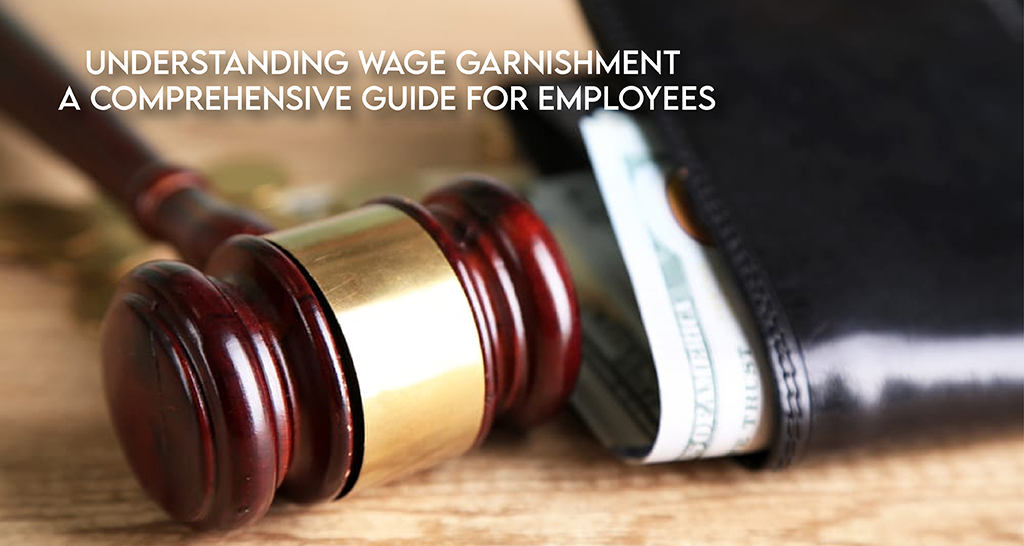In today’s fast-paced world, financial challenges can take a toll on the employees’ mental health, leaving them juggling with overwhelming debts. One such challenge for employees is the wage garnishment. It is a legal process that directly impacts the earnings of the employee.
While this legal process is stressful and challenging, having a clear understanding of wage garnishment is crucial for whoever is facing it. In this article, we’ll discuss what wage garnishment actually is and how employees can navigate through this challenging process. So, let’s get started:
What is Wage Garnishment?
Wage garnishment is a legal process in which creditors get orders to collect debts directly from the salary of the employee. This process typically takes place when the creditor has obtained a court judgment against the debtor, confirming the debt owed.
So, when the court grants the garnishment order, the employer of that person will withhold a portion of his/her salary and remit it to the creditor until the debt is fully paid.
Types of Debts Eligible for Wage Garnishment
Understanding the types of debts eligible for wage garnishment is crucial in navigating this challenging situation. Here are some of the types of debts which are eligible for wage garnishment:
- Unpaid Taxes: These include federal, state, and local taxes, which can lead to garnishment of wages, ensuring individuals fulfill their tax obligations.
- Child Support Payments: Child support payments are another common cause, as non-payment can result in significant financial consequences.
- Student Loans: Student loans, both federal and private, are also eligible for garnishment when borrowers default on their payments.
In addition to this, outstanding medical bills, credit card debts, and even unpaid court fines can lead to wage garnishment orders. It’s crucial for employees to be aware of their obligations related to these debts and explore avenues for resolving them before facing the serious repercussions of wage garnishment.
How Much Amount Can Be Garnished?
The amount that can be garnished from an employee’s wages is determined by federal and state laws. Federal law sets a limit on the maximum amount that can be garnished, which is generally 25% of the employee’s disposable income or the amount by which the employee’s weekly income exceeds 30 times the federal minimum wage, whichever is less.
States may have their own laws governing wage garnishment, and employees are entitled to the protection of whichever law provides the most significant benefit.
Steps for Employees Facing Wage Garnishment
Now that we’ve discussed wage garnishment in detail, let’s discuss what employees must do when facing this challenging situation:
1. Review the Garnishment Order
First and foremost, the employee needs to carefully review the garnishment order and make sure it is correct and legally valid. However, if there’s a discrepancy or error, make sure to consult with an experienced lawyer in your state.
2. Calculate your Exemptions
Once you receive the garnishment order, the next step is to determine the amount of your wages that is exempt from garnishment under federal or state laws. This is the portion of your monthly salary that creditors can’t take.
3. Budget Accordingly
It is important to create a budget to manage your finances effectively, taking into account the reduced income due to wage garnishment. Make sure to prioritize essential expenses, such as housing, utilities, food, and transportation.
4. Negotiate with Creditors
In some cases, creditors may be willing to negotiate a repayment plan that is more manageable for you. This could involve lower monthly payments or a reduced interest rate. Be proactive in discussing your options.
5. Seek Legal Help
If you are facing wage garnishment and feel overwhelmed, it is wise to consult an experienced wage garnishment lawyer who specializes in debt and wage garnishment issues. They can provide valuable guidance and help protect your rights. Also, you can stop your wage garnishment with the help of a skilled lawyer. Hiring a lawyer is especially important when you’re unaware of the local laws and regulations. This results in poor decision making and you may end up paying more than you should for your circumstances.
6. Explore Bankruptcy Options
In extreme cases where wage garnishment is causing significant financial hardship, bankruptcy may be an option. Filing for bankruptcy can stop wage garnishment and help you get a fresh financial start, but it should be considered as a last resort.
7. Stay Informed
Lastly, it is important to stay informed about your rights and the changes in the law. You can hire an experienced lawyer who will give you a brief idea about your rights in this situation.
Conclusion
Understanding wage garnishment is crucial for employees who find themselves facing this challenging situation. While wage garnishment can be stressful and financially burdensome, employees have legal rights and protections that should be upheld.
So, by being aware of the laws governing wage garnishment, taking proactive steps to address the situation, and seeking legal advice when necessary, employees can navigate wage garnishment more effectively and work towards financial stability.

